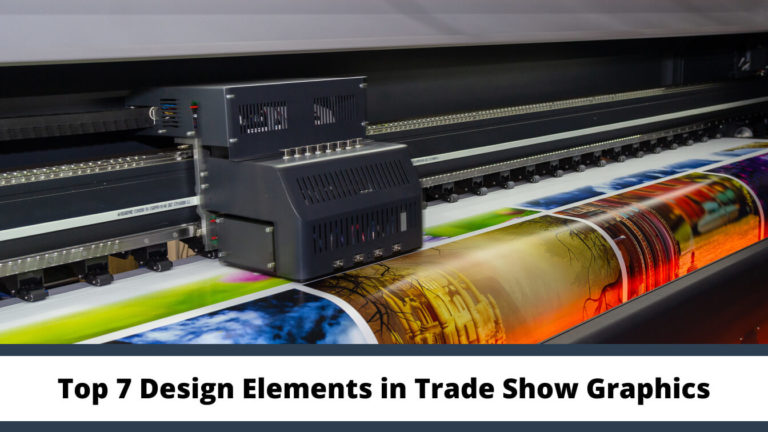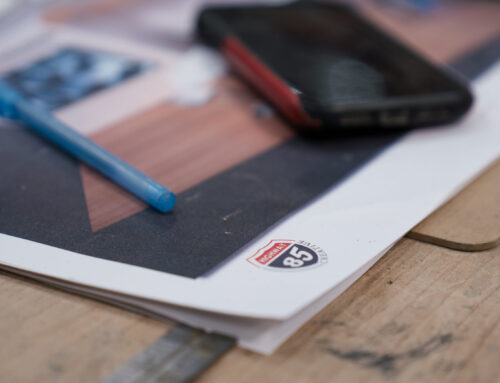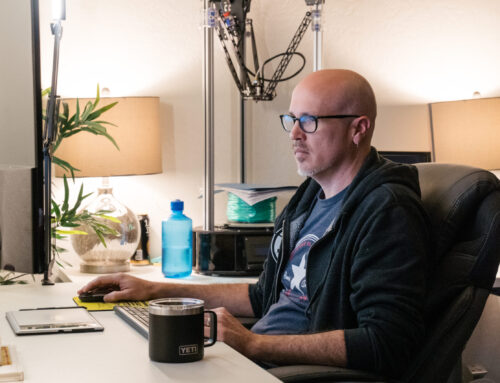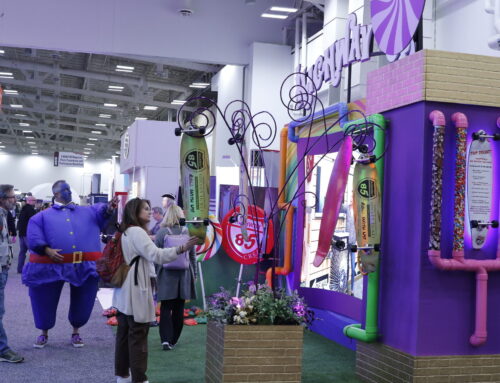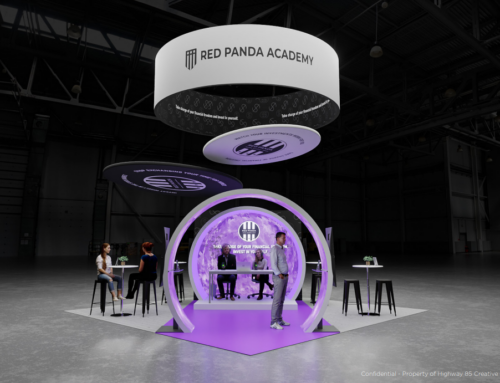Design elements are incredibly important in order to have an appealing, flawless looking trade show display. Not only are they important to having a successful trade show, they’re important in properly representing your company.
When you decide that you’re going to make an appearance at a trade show, a lot more goes into it than just plopping your booth down and hoping for the best. For the best results at a trade show, optimizing your trade show graphics with design elements that work is your best bet.
So, what design elements do you need to have trade show graphics that steal the show?
There’s a variety that you’re going to need to focus on that are going to take every ounce of creative ability within you.
#1 Color

Color is arguably one of the most important design elements. Color is what establishes a mood and evokes emotion from attendees.
When selecting your color palette, make sure you choose one that represents your brand well. Do not use too many neon or overly vibrant colors. Instead, utilize your brand’s current color scheme and extend it slightly if necessary.
Although, just choosing your brand’s color scheme may not be enough to attract and keep the attention of attendees. You may have to branch out and use colors that are more eye popping and attention grabbing.
Finding a way to blend in your brand’s colors with more eye popping colors is going to be difficult to get right. To start, you should understand the basic principles of color, as well as the variations of color through using a color wheel.
Understanding when to use various hues, shades, tones, and tints is difficult and requires knowledge of color theory. Not to mention understanding primary, secondary, and tertiary colors, as well as knowing which colors are complementary.
Needless to say choosing your colors is tricky and if you don’t have a full grasp of this stuff, it’s going to cause problems if you try to do it by yourself. Reach out to a creative trade show graphic design company that can help you in choosing the right colors.
#2 Clarity
Clarity is key to creating a good design. Obviously it is essential to ensure your images are high quality and clear. You also need to make sure there are no errors in your text or grammar.
Most importantly, make sure your graphics retain their quality when printed. Often times, graphics can appear differently after printing, so check yours for quality and clarity. Your graphics should be just about flawless.
If the digital images you’re using look somewhat pixelated on a computer display, imagine what they look like when they’re blown-up to fit the size of your trade show graphic. Pixelated content will become even more pixelated when enlarged, and it’s going to look atrocious.
Starting with the highest quality image you can is going to make things much easier, and will help you avoid trade show disaster.
Aside from using low-quality images, having a crystal clear copy is important too, which we’ll get into in element #5.
#3 Materials
The material you print your graphics on can make a difference in the message that you are sending to attendees. There are so many material options to help you create cool graphics.
Fabric graphics are a cool new choice to help create a unique graphic that captures attendees’ attention. There are also tension fabrics, which can be manipulated into different shapes and give you a lot of creative freedom.
There’s a lot of different types of graphic materials though if tension fabrics aren’t your style. Vinyl banners are just one option, as well as velcro on graphics.
Regardless of the specific materials you need, we can help you with any specific materials you need when building your custom exhibit displays. That’s why it’s called custom, we tailor our work to your specific needs!
#4 Lighting
Lighting is another extremely important design element. Be smart with your lighting choices to help create different moods, movement, and flow throughout your trade show display.
Lighting sets the tone for your entire booth. The proper lighting can be the difference between a warm environment that invites attendees in, and a harsh and cold environment that scares attendees away.
Understand the current ambient lighting of the trade show building you’ll be in. It’s likely they will be using a professional style of lighting that makes accent lighting much easier to use.
Accent lighting is the process of lighting specific parts of your booth to add that “pop”. Some companies use neon lighting, LED lighting, or flood lighting. There are so many different types of light fixtures and types of lighting that figuring out the kind of lighting you need is tricky.
Be sure to never neglect any type of lighting when building your booth. Yes, lighting can be expensive, but it can separate a good booth from a great booth. Also, lights aren’t just a one time use purchase; they will last for every trade show you attend. Seriously, it’s worth the extra money for superior lighting.
#5 Copy
What are you actually trying to say to attendees? Think about the main message you want to get out. If there was one thing that you had to say to someone about your business, and that’s all you could say, that should be your copy.
Also think about what your target consumer needs. Attendees want to know what’s in it for them, and that’s the first thing they’re going to look for when looking at your booth.
What is something you have over your competition? Is there a unique benefit that a customer would receive if they went with your company? Highlight that point and confidently display it in your booth copy.
Your copy should also naturally contain some of your brand’s voice in it. What is your brand’s personality? Think about how you want to come off to attendees who have never heard of you before.
Lastly, make sure your copy has the correct font, size, and color. Something too big could be scary for attendees and text that has a flamboyant font can be annoying to read. As a general guideline, your copy should not be under the 42’’ mark.
You can read up on font/style/color guides yourself to learn more. The one piece of advice we can give is to keep things simple. An overly complicated design will ruin your chances of gaining a customer.
#6 Imagery
Whatever you do, use the highest resolution image you can. That’s rule #1. Your graphic is going to expand that image, so it needs to have as large of a resolution as possible to compensate.
Now, onto the actual image itself. Choose an image that inspires some type of emotion. This goes for any industry. An image that makes attendees imagine themselves working with your business is one that will be highly successful.
Find or create an image that is satisfying to look at, and doesn’t overpower the rest of your display. The human eye can be very picky so choose wisely. A good image that blends in well with the rest of your display is much better than a fantastic image that doesn’t blend well at all.
Whatever image you choose, make sure you keep that in mind and keep everything well composed.
#7 Composition
The elements of composition are all about balance. Another way to think about composition is the overall cohesiveness of your graphic. The proportion of images, copy, and other pieces of your design can be arranged to elicit certain moods.
Consider the emphasis you want to place on each piece of the design when developing your composition. Do you want each piece to contrast with one another? Or do you want each piece to flow to the next. Sometimes a mix of both yields the best results.
Contrasting design elements have always worked in grabbing attention, but can sometimes be too much for attendees. Every single design project is different, but keep in mind how many contrasting elements you are using.
Your unique composition needs to be done right so your brand doesn’t come off as sloppy or lazy. These are terms that you do not want associated with your brand. If an attendee is thinking about them when looking at your graphics, they won’t even bother coming over to your booth.
But, if you have a composition that has a unique and organized style, attendees will get immediately absorbed into the intricacies of your trade show designs, and will be much more likely to visit your booth.
Conclusion
Trade show graphics are hard to nail down right, but when you do you will OWN your creative space. A well composed, color balanced, light balanced, hyper-clear, and enticing display will not only make you more confident about your trade show experience, it will make you more confident about your business as a whole.
If you’ve mastered each design element for trade show graphics, you’ll know just by looking at your booth. If you still need help with some design work and implementation, we know of a great trade show exhibit company that can do it all.
